- Home
- Robert Silverberg
Nightwings Page 10
Nightwings Read online
Page 10
“To make Earth a better tourist attraction,” said the Prince of Roum bitterly at my side.
Manrule Seven went on, “The Chancellor has requested me to inform you of one administrative change that will necessarily follow from the occupied status of your planet. In the past, all disputes among you were settled by the courts of your own guild, with Chancellor Kenishal having the highest right of appeal. For the sake of efficient administration it now becomes mandatory for us to impose our jurisdiction over that of the guild. Therefore the Chancellor will transfer to us those litigations which he feels no longer fall into his sphere of authority.”
The Rememberers gasped. There was a sudden shifting of postures and exchanging of glances on the floor below.
“The Chancellor’s abdicating!” blurted an apprentice near me.
“What choice does he have, fool?” another whispered harshly.
The meeting broke up in some confusion. Rememberers flooded into the hallways, gesticulating, debating, expostulating. One venerable wearer of the shawl was so shaken that he crouched down and began to make the series of stabilizer responses, heedless of the throng. The tide swept over us apprentices, forcing us back. I attempted to protect the Prince, fearing that he would be thrown to the floor and trampled; but we were swept apart and I lost sight of him for minutes. When I saw him again he stood with the Rememberer Olmayne. Her face was flushed, her eyes were bright; she was speaking rapidly, and the Prince was listening. His hand clung to her elbow as if for support.
4
AFTER the conclusion of the early period of orientations, I was given trivial tasks. Chiefly I was asked to do things that in an earlier time would have been performed wholly by machine: for example, to monitor the feed lines that oozed nutrients into the brain-boxes of the memory tanks. For several hours each day I walked through the narrow corridor of the inspection panels, searching for clogged lines. It had been so devised that when a line became blocked, a stress pattern was created that ran the length of the clear tubing that contained it, and beams of a special polarized light illuminated that pattern for benefit of the inspector. I did my humble task, now and again finding a blockage, and I did other little jobs as befitted my status of apprenticeship.
However, I also had the opportunity to pursue my own investigations into the events of my planet’s past.
Sometimes one does not learn the value of things until they are lost. For a lifetime I served as a Watcher, striving to give early warning of a promised invasion of Earth, while caring little who might wish to invade us, or why. For a lifetime I realized dimly that Earth had known grander days than those of the Third Cycle into which I had been born, and yet I sought no knowledge of what those days had been like and of the reasons for our present diminished condition. Only when the starships of the invaders blossomed in the sky did I feel a sudden hunger to know of that lost past. Now, as the most elderly of apprentices, I, Tomis of the Rememberers, rummaged through the archives of vanished time.
Any citizen has the right to go to a public thinking cap and requisition an information from the Rememberers on any given subject. Nothing is concealed. But the Rememberers volunteer no aid; you must know how to ask, which means you must know what to ask. Item by item you must seek your facts. It is useful for those who must know, say, the long-term patterns of climate in Agupt, or the symptoms of the crystallization disease, or the limitations in the charter of one of the guilds; but it is no help at all to the man who wishes knowledge of the larger questions. One would need to requisition a thousand informations merely to make a beginning. The expense would be great; few would bother.
As an apprentice Rememberer I had full access to all data. More important, I had access to the indexes. The Indexers are a guild subsidiary to the Rememberers, a donkey-guild of drudges who record and classify that which they often do not understand; the end product of their toil serves the greater guild, but the indexes are not open to all. Without them one scarcely is able to cope with the problems of research.
I will not summarize the stages by which I came by my knowledge—the hours spent shuffling through interwoven corridors, the rebuffs, the bewilderments, the throbbing of the brain. As a foolish novice I was at the mercy of pranksters, and many a fellow apprentice, even a guild member or two, led me astray for the sheer wicked joy of it. But I learned which routes to follow, how to set up sequences of questions, how to follow a path of references higher and higher until the truth bursts dazzlingly upon one. With persistence rather than with great intellect I wrung from the files of the Rememberers a coherent tale of the downfall of man.
This:
There was a time in ages past when life on Earth was brutal and primitive. We call this time the First Cycle. I do not speak of the period before civilization, that time of grunting and hairiness, of caves and stone tools. We consider the First Cycle to have commenced when man first learned to record information and to control environment. This occurred in Agupt and Sumir. By our way of reckoning the First Cycle commenced some 40,000 years ago—however, we are uncertain of its true length in its own terms, since the span of the year was altered at the end of the Second Cycle, and we have been unable thus far to determine how long, in previous eras, it took for our world to circle its sun. Somewhat longer than at present, perhaps.
The First Cycle was the time of Imperial Roum and of the first flowering of Jorslem. Eyrop remained savage long after Ais and parts of Afreek were civilized. In the west, two great continents occupied much of Earth Ocean, and these too were held by savages.
It is understood that in this cycle mankind had no contact with other worlds or stars. Such solitude is difficult to comprehend; but yet so it occurred. Mankind had no way of creating light except through fire; he could not cure his ills; life was not susceptible to renewal. It was a time without comforts, a gray time, harsh in its simplicity. Death came early; one barely had time to scatter a few sons about, and one was carried off. One lived with fear, but mostly not fear of real things.
The soul recoils from such an era. But yet it is true that in the First Cycle magnificent cities were founded—Roum, Perris, Atin, Jorslem—and splendid deeds were accomplished. One stands in awe of those ancestors, foul-smelling (no doubt), illiterate, without machines, and still capable of coming to terms with their universe and to some extent of mastering it.
War and grief were constant throughout the First Cycle. Destruction and creation were nearly simultaneous. Flames ate man’s most glorious cities. Chaos threatened always to engulf order. How could men have endured such conditions for thousands of years?
Towards the close of the First Cycle much of the primitivism was outgrown. At last sources of power were accessible to man; there was the beginning of true transportation; communication over distances became possible; many inventions transformed the world in a short time. Methods of making war kept pace with the technological growth in other directions; but total catastrophe was averted, although several times it appeared to have arrived. It was during this final phase of the cycle that the Lost Continents were colonized, also Stralya, and that first contact was made with the adjoining planets of our solar system.
The transition from First Cycle to Second is arbitrarily fixed at the point when man first encountered intelligent beings from distant worlds. This, the Rememberers now believe, took place less than fifty generations after the First Cycle folk had mastered electronic and nuclear energy. Thus we may rightly say that the early people of Earth stumbled headlong from savagery to galactic contact—or, perhaps, that they crossed that gap in a few quick strides.
This too is cause for pride. For if the First Cycle was great despite its handicaps, the Second Cycle knew of no handicaps and achieved miracles.
In this epoch mankind spread out to the stars, and the stars came to mankind. Earth was a market for goods of all worlds. Wonders were commonplace. One might hope to live for hundreds of years; eyes, hearts, lungs, kidneys were replaced as easily as shoes; the air was pure, no man we
nt hungry, war was forgotten. Machines of every sort served man. But the machines were not enough, and so the Second Cycle folk bred men who were machines, or machines who were men: creatures that were genetically human, but were born artificially, and were treated with drugs that prevented the permanent storing of memories. These creatures, analogous to our neuters, were capable of performing an efficient day’s work, but were unable to build up that permanent body of experiences, memories, expectations, and abilities that is the mark of a human soul. Millions of such not-quite-humans handled the duller tasks of the day, freeing others for lives of glistening fulfillment. After the creation of the subhumans came the creation of the super-animals who, through biochemical manipulation of the brain, were able to carry out tasks once beyond the capacity of their species: dogs, cats, mice, and cattle were enrolled in the labor force, while certain high primates received functions formerly reserved for humans. Through this exploitation of the environment to the fullest, man created a paradise on Earth.
The spirit of man soared to the loftiest peak it had known. Poets, scholars, and scientists made splendid contributions. Shining cities sprawled across the land. The population was enormous, and even so, there was ample room for all, with no shortage of resources. One could indulge one’s whims to any extent; there was much experimentation with genetic surgery and with mutagenetic and teratogenetic drugs, so that the human species adopted many new forms. There was, however, nothing yet like the variant forms of our cycle.
Across the sky in stately procession moved space stations serving every imaginable need. It was at this time that the two new moons were built, although the Rememberers have not yet determined whether their purpose was functional or esthetic. The auroras that now appear each night in the sky may have been installed at this time, although some factions of Rememberers argue that the presence of temperate-zone auroras began with the geophysical upheavals that heralded the close of the cycle.
It was, at any rate, the finest of times to be alive.
“See earth and die,” was the watchword of the outworlders. No one making the galactic grand tour dared pass up this planet of miracles. We welcomed the strangers, accepted their compliments and their money, made them comfortable in the ways they preferred, and proudly displayed our greatnesses.
The Prince of Roum can testify that it is the fate of the mighty eventually to be humbled, and also that the higher one reaches for splendor, the more catastrophic one’s downfall is apt to be. After some thousands of years of glories beyond my capacity to comprehend, the fortunate ones of the Second Cycle overreached themselves and committed two misdeeds, one born of foolish arrogance, the other born of excessive confidence. Earth is paying yet for those overreachings.
The effects of the first were slow to be felt. It was a function of Earth’s attitude toward the other species of the galaxy, which had shifted during the Second Cycle from awe to matter-of-fact acceptance to contempt. At the beginning of the cycle, brash and naive Earth had erupted into a galaxy already peopled by advanced races that long had been in contact with one another. This could well have produced a soul-crushing trauma, but instead it generated an aggressive urge to excel and surpass. And so it happened that Earthmen quickly came to look upon most of the galactics as equals, and then, as progress continued on Earth, as inferiors. This bred the easy habit of contempt for the backward.
Thus it was proposed to establish “study compounds” on Earth for specimens of inferior races. These compounds would reproduce the natural habitat of the races and would be accessible to scholars wishing to observe the life-processes of these races. However, the expense of collecting and maintaining the specimens was such that it quickly became necessary to open the compounds to the public at large, for purposes of amusement. These supposedly scientific compounds were, in fact, zoos for other intelligent species.
At the outset only the truly alien beings were collected, those so remote from human biological or psychological norms that there was little danger of regarding them as “people.” A many-limbed thing that dwells in a tank of methane under high pressure would not strike a sympathetic response from those likely to object to the captivity of intelligent creatures. If that methane-dweller happened to have a complex civilization of a sort uniquely fitted to its environment, it could be argued that it was all the more important to duplicate that environment on Earth so that one might study so strange a civilization. Therefore the early compounds contained only the bizarre. The collectors were limited, also, to taking creatures who had not attained the stage of galactic travel themselves. It would not have been good form to kidnap life-forms whose relatives were among the interstellar tourists on whom our world’s economy had come so heavily to depend.
The success of the first compounds led to the demand for the formation of others. Less critical standards were imposed; not merely the utterly alien and grotesque were collected, but samplings of any sort of galactic life not in a position to register diplomatic protests. And, as the audacity of our ancestors increased, so did the restrictions on collection loosen, until there were samplings from a thousand worlds on Earth, including some whose civilizations were older and more intricate than our own.
The archives of the Rememberers showed that the expansion of our compounds stirred some agitation in many parts of the universe. We were denounced as marauders, kidnapers, and pirates; committees were formed to criticize our wanton disregard for the rights of sentient beings; Earthmen traveling to other planets were occasionally beset by mobs of hostile life-forms demanding that we free the prisoners of the compounds at once. However, these protesters were only a minority—most galactics kept an uncomfortable silence about our compounds. They regretted the barbarity of them, and nevertheless made a point of touring them when they visited Earth. Where else, after all, could one see hundreds of life-forms, culled from every part of the universe, in a few days? Our compounds were a major attraction, one of the wonders of the cosmos. By silent conspiracy our neighbors in the galaxy winked at the amorality of the basic concept in order to share the pleasure of inspecting the prisoners.
There is in the archives of the Rememberers a memory-tank entry of a visit to a compound area. It is one of the oldest visual records possessed by the guild, and I obtained a look at it only with great difficulty and upon the direct intercession of the Rememberer Olmayne. Despite the use of a double filter in the cap, one sees the scene only blurredly; but yet it is clear enough. Behind a curved shield of a transparent material are fifty or more beings of an unnamed world. Their bodies are pyramidal, with dark blue surfaces and pink visual areas at each vertex; they walk upon short, thick legs; they have one pair of grasping limbs on each face. Though it is risky to attempt to interpret the inner feelings of extraterrestrial beings, one can clearly sense a mood of utter despair in these creatures. Through the murky green gases of their environment they move slowly, numbly, without animation. Several have joined tips in what must be communication. One appears newly dead. Two are bowed to the ground like tumbled toys, but their limbs move in what perhaps is prayer. It is a dismal scene. Later, I discovered other such records in neglected corners of the building. They taught me much.
For more than a thousand Second Cycle years the growth of these compounds continued unchecked, until it came to seem logical and natural to all except the victims that Earth should practice these cruelties in the name of science. Then, upon a distant world not previously visited by Earthmen, there were discovered certain beings of a primitive kind, comparable perhaps to Earthmen in early First Cycle days. These beings were roughly humanoid in form, undeniably intelligent, and fiercely savage. At the loss of several Earthborn lives, a collecting team acquired a breeding colony of these people and transported them to Earth to be placed in a compound.
This was the first of the Second Cycle’s two fatal errors.
At the time of the kidnaping, the beings of this other world—which is never named in the records, but known only by the code designation H362—were in
no position to protest or to take punitive steps. But shortly they were visited by emissaries from certain other worlds aligned politically against Earth. Under the guidance of these emissaries, the beings of H362 requested the return of their people. Earth refused, citing the long precedent of interstellar condonement of the compounds. Lengthy diplomatic representations followed, in the course of which Earth simply reaffirmed its right to have acted in such a fashion.
The people of H362 responded with threats. “One day,” they said, “we will cause you to regret this. We will invade and conquer your planet, set free all the inhabitants of the compounds, and turn Earth itself into a gigantic compound for its own people.”
Under the circumstances this appeared quite amusing.
Little more was heard of the outraged inhabitants of H362 over the next few millennia. They were progressing rapidly, in their distant part of the universe, but since by all calculations it would take them a cosmic period to pose any menace to Earth, they were ignored. How could one fear spear-wielding savages?
Earth addressed itself to a new challenge: full control of the planetary climate.
Weather modification had been practiced on a small scale since late First Cycle. Clouds holding potential rain could be induced to release it; fogs could be dispelled; hail could be made less destructive. Certain steps were taken toward reducing the polar ice packs and toward making deserts more fruitful. However, these measures were strictly local and, with few exceptions, had no lasting effects on environment.
The Second Cycle endeavor involved the erection of enormous columns at more than one hundred locations around the globe. We do not know the heights of these columns, since none have survived intact and the specifications are lost, but it is thought that they equaled or exceeded the highest buildings previously constructed, and perhaps attained altitudes of two miles or more. Within these columns was equipment which was designed, among other things, to effect displacements of the poles of Earth’s magnetic field.

 The Longest Way Home
The Longest Way Home Hawksbill Station
Hawksbill Station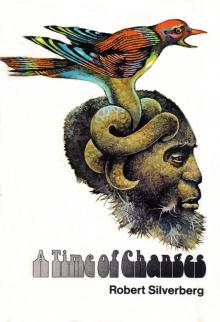 A Time of Changes
A Time of Changes This Way to the End Times: Classic Tales of the Apocalypse
This Way to the End Times: Classic Tales of the Apocalypse Beyond the Gate of Worlds
Beyond the Gate of Worlds Lord Valentine's Castle
Lord Valentine's Castle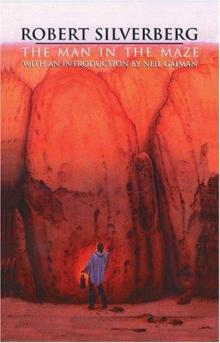 The Man in the Maze
The Man in the Maze Tales of Majipoor
Tales of Majipoor Time of the Great Freeze
Time of the Great Freeze The Collected Stories of Robert Silverberg, Volume 3: Something Wild Is Loose: 1969-72
The Collected Stories of Robert Silverberg, Volume 3: Something Wild Is Loose: 1969-72 Planet of Death
Planet of Death Trips: The Collected Stories of Robert Silverberg, Volume Four
Trips: The Collected Stories of Robert Silverberg, Volume Four In the Beginning: Tales From the Pulp Era
In the Beginning: Tales From the Pulp Era Hot Sky at Midnight
Hot Sky at Midnight Valentine Pontifex
Valentine Pontifex Up the Line
Up the Line Thorns
Thorns Amanda and the Alien
Amanda and the Alien Star of Gypsies
Star of Gypsies Nightwings
Nightwings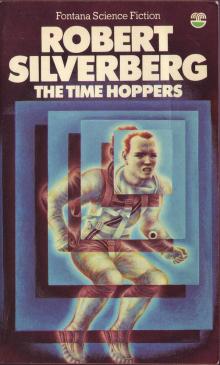 The Time Hoppers
The Time Hoppers Blood on the Mink
Blood on the Mink Dying Inside
Dying Inside The Last Song of Orpheus
The Last Song of Orpheus The King of Dreams
The King of Dreams The Stochastic Man
The Stochastic Man The Collected Stories of Robert Silverberg, Volume Seven: We Are for the Dark
The Collected Stories of Robert Silverberg, Volume Seven: We Are for the Dark The Millennium Express: The Collected Stories of Robert Silverberg, Volume Nine
The Millennium Express: The Collected Stories of Robert Silverberg, Volume Nine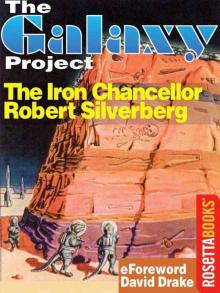 The Iron Chancellor
The Iron Chancellor Lord Prestimion
Lord Prestimion To Open the Sky
To Open the Sky The World Inside
The World Inside Chains of the Sea
Chains of the Sea The Collected Stories of Robert Silverberg, Volume Five: The Palace at Midnight
The Collected Stories of Robert Silverberg, Volume Five: The Palace at Midnight Postmark Ganymede
Postmark Ganymede The Second Trip
The Second Trip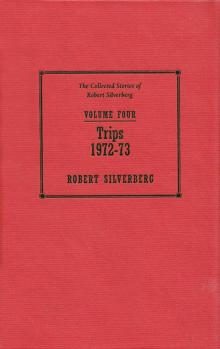 The Collected Stories of Robert Silverberg, Volume 4: Trips: 1972-73
The Collected Stories of Robert Silverberg, Volume 4: Trips: 1972-73 Son of Man
Son of Man Tom O'Bedlam
Tom O'Bedlam To the Land of the Living
To the Land of the Living To Be Continued: The Collected Stories of Robert Silverberg, Volume One
To Be Continued: The Collected Stories of Robert Silverberg, Volume One Shadrach in the Furnace
Shadrach in the Furnace The Chalice of Death: Three Novels of Mystery in Space
The Chalice of Death: Three Novels of Mystery in Space The Queen of Springtime
The Queen of Springtime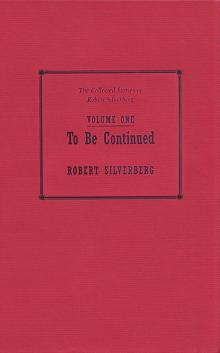 To Be Continued 1953-1958
To Be Continued 1953-1958 Legends
Legends Roma Eterna
Roma Eterna To Live Again
To Live Again At Winter's End
At Winter's End Needle in a Timestack
Needle in a Timestack To Live Again and the Second Trip: The Complete Novels
To Live Again and the Second Trip: The Complete Novels Lord of Darkness
Lord of Darkness The Mountains of Majipoor
The Mountains of Majipoor The World Outside
The World Outside The Alien Years
The Alien Years The Book of Skulls
The Book of Skulls The Face of the Waters
The Face of the Waters Gilgamesh the King
Gilgamesh the King The Collected Stories of Robert Silverberg, Volume 6: Multiples: 1983-87
The Collected Stories of Robert Silverberg, Volume 6: Multiples: 1983-87 The Happy Unfortunate
The Happy Unfortunate Three Survived
Three Survived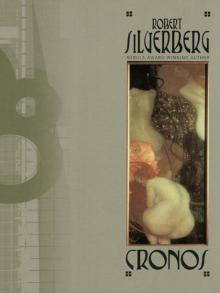 Cronos
Cronos Tower of Glass
Tower of Glass Legends II
Legends II The Planet Killers
The Planet Killers The Collected Stories of Robert Silverberg, Volume 2: To the Dark Star: 1962-69
The Collected Stories of Robert Silverberg, Volume 2: To the Dark Star: 1962-69 Downward to the Earth
Downward to the Earth Lord Valentine's Castle: Book One of the Majipoor Cycle
Lord Valentine's Castle: Book One of the Majipoor Cycle Hot Times in Magma City, 1990-95
Hot Times in Magma City, 1990-95 Hunt the Space-Witch! Seven Adventures in Time and Space
Hunt the Space-Witch! Seven Adventures in Time and Space Majipoor Chronicles
Majipoor Chronicles The Robert Silverberg Science Fiction Megapack(r)
The Robert Silverberg Science Fiction Megapack(r) Starman's Quest
Starman's Quest Car Sinister
Car Sinister Worlds of Maybe
Worlds of Maybe Fantasy The Best of 2001
Fantasy The Best of 2001 Revolt on Alpha C
Revolt on Alpha C Homefaring
Homefaring The Pardoner's Tale
The Pardoner's Tale Sailing to Byzantium - Six Novellas
Sailing to Byzantium - Six Novellas The Chalice of Death
The Chalice of Death Sundance
Sundance A Tip on a Turtle
A Tip on a Turtle Nebula Awards Showcase 2001: The Year's Best SF and Fantasy Chosen by the Science Fiction and Fantasy Writers of America
Nebula Awards Showcase 2001: The Year's Best SF and Fantasy Chosen by the Science Fiction and Fantasy Writers of America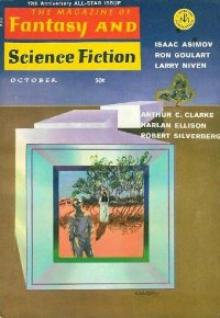 The Fangs of the Trees
The Fangs of the Trees The Palace at Midnight: The Collected Work of Robert Silverberg, Volume Five
The Palace at Midnight: The Collected Work of Robert Silverberg, Volume Five The Millennium Express - 1995-2009 - The Collected Stories of Robert Silverberg Volume Nine
The Millennium Express - 1995-2009 - The Collected Stories of Robert Silverberg Volume Nine Book of Skulls
Book of Skulls Passengers
Passengers Something Wild is Loose - 1969–72 - The Collected Stories of Robert Silverberg Volume Three
Something Wild is Loose - 1969–72 - The Collected Stories of Robert Silverberg Volume Three Multiples
Multiples Starborne
Starborne The Masks of Time
The Masks of Time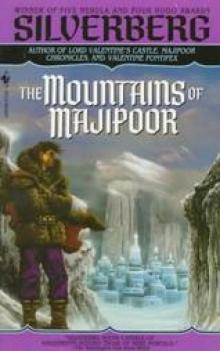 The Mountains of Majipoor m-8
The Mountains of Majipoor m-8 Multiples (1983-87)
Multiples (1983-87) Those Who Watch
Those Who Watch In the Beginning
In the Beginning Earth Is The Strangest Planet
Earth Is The Strangest Planet Collision Course
Collision Course Neutral Planet
Neutral Planet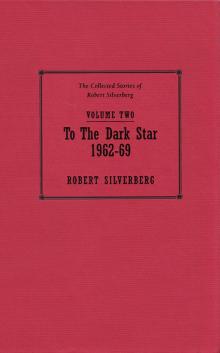 To the Dark Star - 1962–69 - The Collected Stories of Robert Silverberg Volume Two
To the Dark Star - 1962–69 - The Collected Stories of Robert Silverberg Volume Two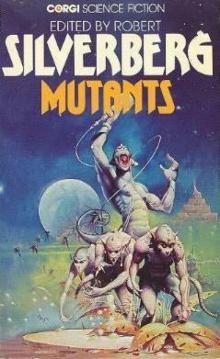 Mutants
Mutants Sailing to Byzantium
Sailing to Byzantium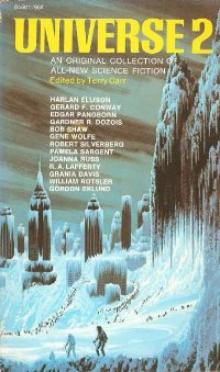 When We Went to See the End of the World
When We Went to See the End of the World Robert Silverberg The Science Fiction Hall Of Fame Volume One, 1929-1964
Robert Silverberg The Science Fiction Hall Of Fame Volume One, 1929-1964 To Be Continued - 1953–58 - The Collected Stories of Robert Silverberg Volume One
To Be Continued - 1953–58 - The Collected Stories of Robert Silverberg Volume One Valentine Pontifex m-3
Valentine Pontifex m-3 Gianni
Gianni Majipoor Chronicles m-2
Majipoor Chronicles m-2 We Are for the Dark (1987-90)
We Are for the Dark (1987-90) Waiting for the Earthquake
Waiting for the Earthquake Fantasy: The Best of 2001
Fantasy: The Best of 2001 How It Was When the Past Went Away
How It Was When the Past Went Away Beauty in the Night
Beauty in the Night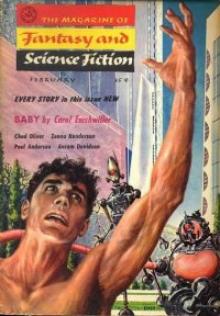 The Man Who Never Forgot
The Man Who Never Forgot The Book of Changes m-9
The Book of Changes m-9 Lord Valentine's Castle m-1
Lord Valentine's Castle m-1 This Way to the End Times
This Way to the End Times Queen of Springtime
Queen of Springtime Legends-Volume 3 Stories by the Masters of Modern Fantasy
Legends-Volume 3 Stories by the Masters of Modern Fantasy The Palace at Midnight - 1980–82 - The Collected Stories of Robert Silverberg Volume Five
The Palace at Midnight - 1980–82 - The Collected Stories of Robert Silverberg Volume Five Something Wild is Loose: The Collected Stories of Robert Silverberg, Volume Three
Something Wild is Loose: The Collected Stories of Robert Silverberg, Volume Three Multiples - 1983–87 - The Collected Stories of Robert Silverberg Volume Six
Multiples - 1983–87 - The Collected Stories of Robert Silverberg Volume Six Alaree
Alaree Three Survived: A Science Fiction Novel
Three Survived: A Science Fiction Novel Defenders of the Frontier
Defenders of the Frontier The New Springtime
The New Springtime We Are for the Dark - 1987–90 - The Collected Stories of Robert Silverberg Volume Seven
We Are for the Dark - 1987–90 - The Collected Stories of Robert Silverberg Volume Seven The Science Fiction Hall of Fame, Volume One 1929-1964--The Greatest Science Fiction Stories of All Time Chosen by the Members of the Science Fiction Writers of America
The Science Fiction Hall of Fame, Volume One 1929-1964--The Greatest Science Fiction Stories of All Time Chosen by the Members of the Science Fiction Writers of America Master Of Life And Death
Master Of Life And Death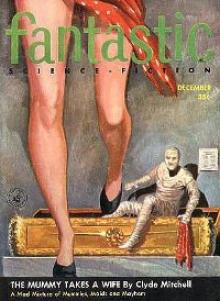 Choke Chain
Choke Chain Sorcerers of Majipoor m-4
Sorcerers of Majipoor m-4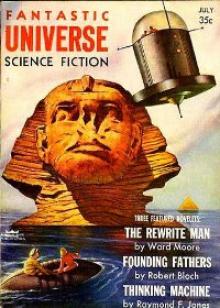 Absolutely Inflexible
Absolutely Inflexible Trips - 1962–73 - The Collected Stories of Robert Silverberg Volume Four
Trips - 1962–73 - The Collected Stories of Robert Silverberg Volume Four Hot Times in Magma City - 1990-95 - The Collected Stories of Robert Silverberg Volume Eight
Hot Times in Magma City - 1990-95 - The Collected Stories of Robert Silverberg Volume Eight Far Horizons
Far Horizons The Queen of Springtime ns-2
The Queen of Springtime ns-2 The Seventh Science Fiction Megapack
The Seventh Science Fiction Megapack Invaders From Earth
Invaders From Earth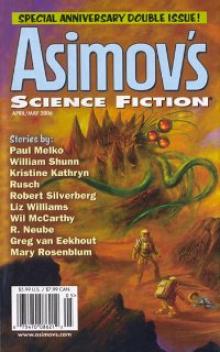 Hanosz Prime Goes To Old Earth
Hanosz Prime Goes To Old Earth The Macauley Circuit
The Macauley Circuit Science Fiction: The Best of 2001
Science Fiction: The Best of 2001 To the Dark Star: The Collected Stories of Robert Silverberg, Volume Two
To the Dark Star: The Collected Stories of Robert Silverberg, Volume Two Stochastic Man
Stochastic Man Legends: Stories By The Masters of Modern Fantasy
Legends: Stories By The Masters of Modern Fantasy To Live Again And The Second Trip
To Live Again And The Second Trip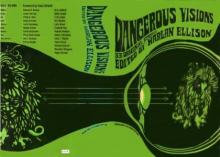 Flies
Flies The Silent Invaders
The Silent Invaders Ship-Sister, Star-Sister
Ship-Sister, Star-Sister